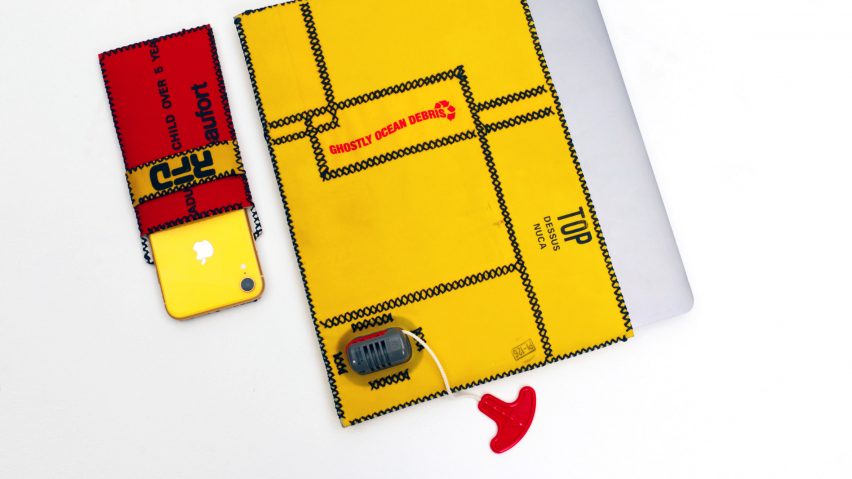Northumbria graduate Harry Jones has produced a collection of clothing and lifestyle accessories using the life jackets left on European beaches during the refugee crisis.
The collection, titled Ghostly Ocean Debris, uses the discarded bright yellow jackets as the raw material to produce items such as flip-flops, placemats, and satchels.
Rather than going to landfill, the life jackets are repurposed, with the proceeds from their sale going to support associated charities.
Further products in the line include smartphone cases, credit card holders and pencil cases.
Jones designed the collection "to heighten our appreciation for the dangers these people face" by drawing attention to the cause in a visual way.
"The aim of this project is to provoke an emotional reaction in an audience and raise awareness about the ongoing refugee crisis," he explained.
"Theoretically, for this project to be successful it has to go out of business. This would mean that the problem has been resolved and refugees are no longer taking the treacherous crossing over the Mediterranean Sea, leaving lifejackets washed up on the beaches of Europe."
The branding for the Ghostly Ocean Debris collection solely uses the yellow, black and red found on the standard-issue life jackets. Any additional materials used are clearly marked as recycled.
Printed white t-shirts that form part of the collection are printed with the words Life, and the identification information of a life jacket on the front in red type.
The name of the collection is printed in the back, with a written statement that offers details of the crisis.
"More than 450,000 life jackets have accumulated on the Greek island of Lesbos as refugees risk their lives to find safety in Europe," the t-shirt reads. "Lesbos is just one landing spot for climate and war refugees from Syria, Pakistan, Afghanistan, Somalia and other African nations."
"In 2018 there were 116,647 arrivals to Spain, Italy and Greece. 2,275 people didn't survive the treacherous crossing through the Mediterranean sea," it continued.
"We upcycle the life jackets that saved refugee lives, preventing them from going to landfill. Every life jacket used will represent a refugee who survived a journey that many haven't."
The ongoing refugee crisis has inspired many designers to find solutions to the practical problems faced by displaced people.
Designer Anna Meddaugh created a personal urinal that women who might be in danger of sexual violence should they go outside at night at a refugee camp.
Meanwhile, students at Lahti University of Applied Sciences designed a selection of essential furniture items for displaced persons including a room divider, bookcase and table set, all made from cardboard.
During Dezeen's Good Design for a Bad World talk series at Dutch Design Week in 2017, experts pleaded with designers not to design another refugee shelter. It is more helpful to focus on removing the physical and non-physical barriers that prevent refugees from travelling and integrating, they said.

